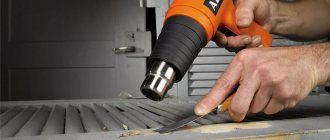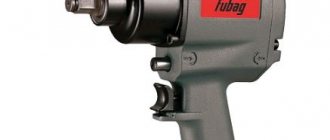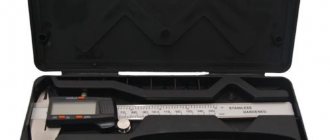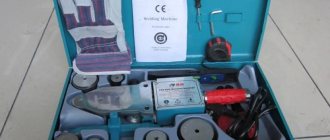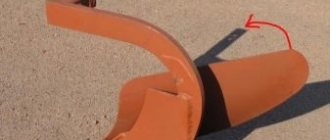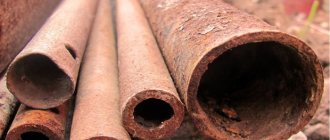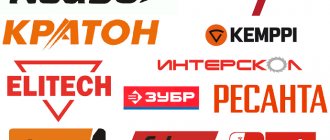No. 1. Operating principle and advantages
The first staplers date back to the 18th century. They appeared in France, at first the design was intended for fastening sheets of paper, then a mechanism for connecting thin, but already brass sheets was patented. Years have passed, new solutions have appeared, and today we are fortunate to use a tool that allows us to perform many operations. When the first construction staplers were in the hands of domestic craftsmen, they used them to fasten literally everything, even drywall to a wooden frame and cork wallpaper to the wall.
The construction stapler has many names, both professional and popular: tacker, nailer, stapler, stapler , stapler . Surely, there are some other names, and all of them in one way or another hint to us about the principle of operation of this tool.
The design of a construction stapler is simple . The main element is a spring, coiled or flat spring. The spring first compresses and then expands, giving force to the staple and driving it into the material. How is the spring compressed? Thanks to muscular force in mechanical staplers, or thanks to the motor - in electric ones. There are also pneumatic staplers, they work somewhat differently, but in everyday life and even when performing repair work, such models are rarely used.
The stapler can work not only with staples, but also with nails, pins and some other fasteners. Some models, like their stationery counterparts, can bend the paperclip tabs from the reverse side.
The main advantages of a construction stapler include :
- the fastening process takes less time and effort compared to using a hammer, and you won’t be able to hit your fingers;
- one hand always remains free, and when performing work, for example, on a stepladder, this is very important;
- the ability to mount in hard-to-reach places;
- precise transfer of impact energy, so you can work with very complex surfaces without fear of damaging them;
- durability and reliability of the tool, because there are a minimum of parts in it - there is nothing special to break;
- multifunctionality.
Note that not every fastener can be hammered using a tacker, although the tool has long gone beyond just a staple driver. Each type of stapler (mechanical, electric and pneumatic) has its own disadvantages, which we will discuss below.
No. 2. Scope of use of a construction stapler
The principle of operation of a construction stapler remains unchanged, but savvy users use the tool to solve more and more new problems. Typically, a stapler is used to attach materials that a stapler can pierce to a base made of wood, chipboard or plywood. The tool is also used to connect equivalent parts . In this case, the staple pierces the material and its legs bend. This is all theory, but in practice, a construction stapler is used to perform the following tasks:
- furniture upholstery. In the furniture business, a stapler is almost the main tool. The tacker is also actively used when reupholstering furniture;
- fastening roofing felt and bitumen shingles;
- installation of film on the greenhouse frame;
- installation of sheet materials (plywood, chipboard, fiberboard, MDF, tin) on the frame;
- cladding with clapboard and siding, fixing carpeting to the floor;
- installation of insulation, insulation, films and membranes;
- fixing electrical cables during wiring installation;
- fastening glazing beads on plastic windows;
- assembly of pallets, etc.
Naturally, not every stapler can cope with all these tasks. Before purchasing, you should decide on the purpose of use and choose the most suitable tool.
No. 3. Types of construction staplers
Mechanical stapler
The simplest version of a stapler, which is suitable for a home craftsman who uses the tool only from time to time. The main structural elements are: lever, spring and housing. With the help of muscular force, the user compresses the lever, due to which the spring is erected. During expansion, the spring pushes the staple or nail with enough force to pierce the surface.
The main advantages of the solution include:
- a simple design in which there is nothing to break. You will only need to occasionally lubricate the spring with general purpose lubricants;
- complete autonomy. This stapler does not depend on the presence of electricity, has no wires, is always ready for use, and can be used anywhere;
- lightness and compactness;
- reasonable price.
The main disadvantage is that you will have to apply force, and for some it will be difficult. If you have to hammer in dozens of nails or staples, your hand will become very tired. Mechanical tools cannot cope with any material. Professional craftsmen should not take such a stapler (or take it, but in a set with a tool of a different type), but for the household, for rare jobs, such a stapler is exactly what is needed. However, sometimes mechanical staplers are also used in workshops: these are stationary tools, activated by pressing the foot, which greatly facilitates the work.
The body of the stapler can be made of steel (give preference to powder-coated models), light alloys or even shockproof plastic. There is no particular difference - the main thing is that the body is assembled not with rivets, but with screws. In this case, the stapler can be disassembled and cleaned if necessary. It is important that the lever be metal , since the most effort is applied to it.
Mechanical staplers differ in the type of impact mechanism :
- a tool with a twist (torsion) spring costs less, but requires more effort. These are noisier staplers with noticeable recoil;
- a tool with a spring (leaf) spring is easier to use, has low recoil, but is more expensive.
To reduce the recoil force, manufacturers use special shock-absorbing linings and other solutions in the design.
Separately, it is worth noting hammer staplers . They work due to the force of impact: you swing, hit the surface with the tool - and the staple flies out. There is no talk about the accuracy of the fastening, and it won’t be possible to swing it everywhere, but when it is necessary to make a lot of fastenings, and jeweler’s precision is not required, such a tool can be used. It will come in handy, for example, when installing roofing felt.
When purchasing, pay attention to the grip angle , i.e. the angle between the lever and the body. The smaller it is, the easier it will be to carry out work by weight. All mechanical staplers have a penetrating force regulator : the impact power is adjusted with a switch or wheel and allows you to adapt to working with different materials. As a result, you get an absolutely flat surface: the staple or nail will not stick out, but will not be too deep, and there will be no dents from the striker on the surface.
Additional convenience is offered by tools that are equipped with a double-impact function. If the staple does not penetrate the material the first time, it is finished off with a second impulse.
The noses of some staplers are made to protrude - this is necessary for working in hard-to-reach places. Also, the design and configuration may include hooks and distance stops . They are necessary to drive staples at a clearly defined distance from the edge of the surface. Whether such bells and whistles are needed is up to you to decide.
If the choice fell on a mechanical stapler, evaluate the design of the store . It will be more convenient if the fasteners are inserted in the same way as in a stationery stapler. It is less convenient to push them through the slot hole. An advantage will be a viewing window for quickly checking the remaining number of staples.
As for the type of fasteners , most mechanical type tackers work with straight staples. There are models that work with rounded brackets (these are used to mount wiring). There is also a universal tool on sale: you can insert both straight and rounded elements, and sometimes even small nails and pins. To fasten cardboard, use a stapler with a reverse anvil, which allows you to bend the ends of the staple from the reverse side. A tool that can do everything is more expensive, but not all of its functions are always in demand, so carefully evaluate the possible areas of application of the stapler.
Electric stapler
The spring is driven by a motor, which means that even a fragile woman can operate the stapler. more powerful springs in such devices to allow the use of larger fasteners and insert them to a significant depth: 30 mm maximum depth versus 10-15 mm for mechanical analogues.
Such models also have disadvantages . They are heavier than mechanical ones, cost more and depend on electricity. Wired models require an outlet, and wires can sometimes get in the way. Cordless staplers are heavier and more expensive, and the batteries will have to be recharged or replaced regularly.
Electric staplers are encased in metal cases and equipped with rubberized pads to protect against electric shock. Compared to their mechanical counterparts, electric models have much wider functionality . Many tools have smooth adjustment of the impact force, the function of striking with two staples, removing fasteners, a depth sensor, a reusable strike, a shot when pressing the tip of the stapler onto the material, etc.
In pursuit of functionality, do not miss the main thing. For cordless staplers , how long the battery lasts and charges is important. It would be great if the kit comes with two batteries. The fastest batteries charge in 20 minutes. When purchasing a wired product, pay attention to the length of the cable: it must be at least 5 m. The rate of shots . On average, this is 20-30 rounds per minute. Depending on the power, the tool can drive fasteners to different depths. As a rule, this figure is at the level of 20-25 mm, but in particularly advanced models it reaches 30 mm.
It only makes sense to buy an expensive electric stapler when construction and repair work is your main activity. For performing one-time household work, such a tool is too expensive and functional.
Pneumatic stapler
There is no spring in this stapler - the main work is performed by a pneumatic cylinder under the force of compressed air. The latter is supplied from a pneumatic distributor. The stapler itself is very compact and powerful, allowing you to instantly and reliably hammer the fastener to an impressive depth. The downside is the need to use a compressor, which is heavy and bulky. Transporting it from place to place is not so easy. That is why pneumatic staplers are used, as a rule, to perform work in one place where high power and speed are required. A striking example is furniture production. In general, this type of equipment is used only in production. In everyday life and when performing repair work, such a tool is rarely used.
Pneumatic staplers differ in operating pressure: for some, 4 bar is enough, others require 6-8 bar. Air consumption per blow may also differ, but this is not so important. The normal speed of operation is considered to be 1 blow per 1 second. There are also faster models. The tool copes with wide and long (up to 50 mm) staples and medium nails, and often receives a lot of useful additional functions.
Instructions for use
To understand why a furniture stapler bends staples, you need to check whether they are inserted correctly, and also compare the material of the base and the staple. The required fastener characteristics are indicated on the tool label. You need to study it carefully and choose exactly the brackets that are indicated.
If you have taken the necessary staples, but the furniture stapler does not hammer in the staples, there may be several reasons:
- tool malfunction;
- discrepancy between the selected metal and the hardness of the base;
- blunt ends of the staple if there is an obstacle to its entry into the material;
- incorrectly threaded stapler;
- unadjusted instrument.
Before work, you need to make sure that this type of paper clip is suitable in shape and size for the stapler. If these parameters do not match, the tool will not work. The exact description of the required consumables is indicated on the box for the stapler or on a sticker located on the body of the tool.
How to insert staples into each specific stapler is indicated in its instructions. Usually they are located with sharp edges down on a special holder with a spring. It is filled all the way so that the stapler lasts a long time. The exact number of paper clips is indicated in the instructions. It is in the box with the stapler.
If the tool is mechanical, then it needs to adjust the screw regulator (if equipped). The greater the depth of the staple, the tighter the handle should be tightened. Sizes from 10 mm are taken into account.
The adjustment is checked on an inconspicuous place or unnecessary material, identical in properties to the base. The adjustment is carried out gradually, from the minimum position to the maximum. Adjustment is carried out until the bracket enters the base with one blow. Once the tool is set up, it can be used directly on the part.
In order not to make a mistake in the distance from one bracket to another, mark it with a pencil. Some staplers have a lock that allows you to set the desired length between the staples without basting. It is better to insert the staples not parallel to the edge of the sheet, but with an inclination of 45°
To ensure that the edges of the product look neat and do not have to redo the work, the material is held while driving the staples. It is necessary to check after each row that the required number of paper clips is present. When upholstering upholstered furniture, the distance between the fasteners should not be too small to prevent damage to the fabric. It is best to insert paper clips into the fold of the material, which will extend the life of the product.
Safety precautions when working with a stapler require you to put the tool on safety after finishing the work or session. This will prevent injury and damage to the instrument. If you follow these simple rules, working with a stapler will not cause any inconvenience, but will allow you to quickly and easily carry out the necessary repairs.
Installing staples
No. 4. Stapler and type of task performed
Depending on the design and type of tasks for which the stapler is intended, there are several types of devices:
- classic stapler - a mechanical tool that works with flat staples and is great for the home craftsman;
- The cable stapler works with arcuate staples and is designed for installing cables;
- A packaging stapler is used to create boxes from corrugated cardboard. A distinctive feature of the design is the presence of a reverse anvil, a platform due to which the legs of the staple are bent. In this way, you can create a much stronger fastening than using tape;
- window stapler is designed to work with special metal pins;
- corner stapler used when parts need to be fastened at a certain angle, for example, when making photo frames.
Types and sizes
Each furniture stapler has its own type of staples. There are a large number of them and they all vary in size. The most commonly required staples are suitable for furniture staplers of type 53 and 140. They have the following parameters:
- 53 — back width 11.3 mm, thickness 0.7 mm, leg height (depth of entry into the material) from 4 to 14 mm;
- 140 - width 10.6 mm, thickness 1.25 mm (almost 2 times the previous one), height 6-14 mm.
Staples for furniture staplers can have the same dimensions but have different names. This is due to the characteristics of their manufacturer. Each type of fastener has its own parameters. They mean the following:
- width characterizes the strength of the material (for use on thin fabric, take wide ones, but when working with plywood, this size does not matter);
- thickness (length of the staple) is needed to assess the possibility of hiding the fastening, but not every stapler can work with a short staple, and this also reduces the fastening force);
- height (length of the leg) characterizes the thickness of the canvas on which the fastening is made, taking into account the depth of entry into it.
Knowing the parameters of furniture staples and their meaning is necessary for the correct selection of fasteners. Among furniture clips (this is another name for staples), there are differences in shape. It determines the type of fastener:
- U (legs pointing down) - especially popular in Canada and the USA at Christmas, it is used to mount home decorations. The depth of entry of the staple into the material is adjusted on the stapler, which allows you to avoid damaging the wiring. The most common type is made of aluminum with sharp ends;
- P - considered universal, made of various materials, used everywhere except for fastening wiring;
- T - a rare and expensive form, resembles nails, has low fastening force, so you should not use it in critical places. Capable of holding plywood, thin wood (lining), chipboard.
The choice of staple depends on the shape, parameters and model of the stapler, as well as the type of work performed. This needs to be taken into account before going to a hardware store.
U-shaped
U-shaped
T-shaped
No. 5. Types of staples for staplers
Each stapler model is designed to work with a specific type and size of staples. This determines the impact force of the tool and its purpose. If you do not pay enough attention to this parameter, you may encounter the fact that the selected stapler does not cope with the assigned tasks.
Staples differ in shape, size and type of sharpening. They are in form:
- rectangular or U-shaped. Universal staples are produced in a wide range of sizes, and not only the height of the staple is important, but also its length and thickness. Staples are divided into several types depending on the combination of these parameters. The sizes of different types of staples are shown in the table below.
- semicircular ones are necessary for fastening cables; they come in two main sizes. Type 28 (S) staples allow you to fasten cables with a diameter of up to 4.5 mm. Type 36 (L) staples are designed for cables with a diameter of up to 6 mm.
The ends of the staple may be unsharpened or sharpened . The latter are easier to work with, they fit into the material better and almost never jam.
Some models work with nails and pins up to 20-30 mm long . Remember that the thicker the materials you have to work with, the greater the driving depth should be, and the higher the staples/nails/pins should be.
The choice depends on what you intend to do with the stapler. If you plan to upholster upholstered furniture, then you will have to work with elements of type 140, if you are fastening wiring - 28 or 36, if you are working with paper, cardboard or thin fabric -53, and if you drive nails - 47,48 and 49. Many staplers can work together with different types of staples, which means that one such tool can be used to perform a number of tasks.
Also pay attention to the magazine capacity. The more fasteners that fit there, the less often you will have to interrupt and insert new staples or nails.
Bracket material
Staples for an electric stapler (as well as for mechanical and pneumatic ones) are made from different materials. According to this criterion, the following types of fasteners are distinguished:
- aluminum;
- copper;
- steel.
This determines not only the properties of fasteners, but also indicates the scope of their application.
Steel consumables for construction staplers
Due to their significant strength, steel staples are used in practice most often in various fields of activity. They may be hot or not. The first ones are used if you have to work with hard material. They are good to drive in, but they break more easily, unable to withstand lateral loads.
The main disadvantage of both types of steel fasteners is their susceptibility to corrosion: they rust over time. Corrosion processes occur especially quickly in humid conditions. This not only spoils the appearance of the connection, but also reduces its strength.
Staples for construction stapler Steel 62125, T50, 14x10.6 mm
To extend the life of steel brackets, they are coated with zinc. Galvanized products are quite resistant to destruction, so they last many times longer.
Also, to prevent corrosion, fasteners are made from stainless steel. Such products are more expensive than products made from ordinary metal. Stainless steel staples are very reliable because they are resistant to destruction. Galvanized and stainless steel consumables are produced mainly by well-known manufacturers who are concerned about their reputation.
Aluminum and copper fasteners
Aluminum staples are a cheap option. The products are resistant to corrosion, but have low strength: they can easily bend when driven in or burst from a relatively small load. For these reasons, the scope of application of aluminum consumables is limited to working with soft materials: assembling cardboard containers, securing electrical wiring, as well as light cladding.
Copper staples for furniture staplers are stronger than their aluminum counterparts. They are also resistant to corrosion and are suitable when working with soft materials. In addition, the high cost limits the distribution of copper fasteners: they are used mainly for decorative finishing.
